Ruth Knafo Setton's Blog, page 6
July 1, 2014
R.I.P.: ONE DEARLY DEPARTED STUTTER

I am sad to see you go, but you did your job well.
Let me explain. In the novel I just finished, I gave a character a stutter. It wasn't a casual decision. I thought it out deeply, interviewed people, read and researched causes, symptoms and treatments.
I sneaked it in quietly while he was busy failing in love with another character. When he tried to talk to her, he couldn't say her name properly, which set a wrench in the love department. He also found himself breathing and moaning and stumbling over words until my readers protested with marginal comments like, "Not the stutter again!"
Sweet, sensitive guy that he is, he took it all in stride-- the way he'd accepted the abusive father, dead mother, poverty and general pain I'd already saddled him with.
Overkill, anyone?
I cut back the stutter on the page, tried ingenious ways to make it sexy, played with sounds and words, and created the most tender scene ever when he finally says her name and stumbles over it. But at that moment he and I reached an impasse. He resented the stutter and let me know by suddenly breaking into long speeches without stumbling over a single letter or syllable.
The character he fell in love with had warned the reader (and me) about him from Day One. Everyone else saw only the sweetness in him, but she noticed the icy glint in his eyes, the steel resolve behind the gentle demeanor.
I yielded and watered down the stutter even more until only hints remained and a few oddly pronounced words.
It became ridiculous.
My readers sighed. "We love him except for the stutter."
Then my agent read the book. "About that stutter ..."
Damn damn damn. I knew it. We had a ferocious talk, my character and me. He did not stutter once. "You gave me enough crosses to bear," he said. "You did your work. I'm who I am, I don't need that stutter."
I reread what I'd written-- page by page, word by word-- and they were right, all of them. It's not the stutter itself that was an issue-- it was that I'd imposed it on him as a sort of cosmetic prop that became unnecessary and distracting. But the work I'd done had paid off. He is a complex character with a rich past and a story to tell. In the end he didn't need the stutter, and neither did the book.
I believe surgery was a success. So R.I.P., dear Stutter. Learning about you made me very sensitive to the issue of stuttering. You were a great help in exploring and developing my character, and I'm sorry you couldn't remain in the final manuscript.
But the shadow-stutter is still there in my character's silences and the curious rhythm of his words. He remembers what it was like to feel a monster hand clamp over his mouth and make every syllable torture until he created his own way of talking-- one in which every word matters.
I hope the reader will sense traces of it too, even if it's not on the page. It's all part of the process of creation-- layer upon layer that make up the foundation of a work of art. The colors and streaks of paint you glimpse in a painting, the scratches & scrawls underlying a finished story ... The part that shows we're human and flawed, always struggling to bring our visions into the light.
The part I love most.
Published on July 01, 2014 10:45
June 11, 2014
HISTORY IS NOT WAS, IT IS.

at the Sisters' House
I have always loved Church Street in downtown Bethlehem, since the days when I took piano lessons with a man who seemed even more ancient than the stone buildings. In those days I memorized Beethoven & Bartok for the dreaded piano recitals at the same time I memorized the history of Count Zinzendorf & the Moravians settling in Bethlehem in 1741. I love walking through history, hearing voices from the past whisper in my ears or breathe on the back of my neck. And I've never ever felt history was over.
Faulkner's words-- "History is not was, it is." -- formed the guiding principle behind my first novel, THE ROAD TO FEZ, in which I explored painful (& wonderful) moments in the history of Jews & Arabs in Morocco through the figure of a beautiful teenaged Jewish martyr, Suleika.
The realization that the past is never really past was also the guiding principle behind last week's Moravian Writers' Conference in Bethlehem PA. The gathering featured keynote speakers Ursula Hegi & Laurie Halse Anderson, as well as a wonderful mix of faculty authors & students at the historic Moravian College campus.
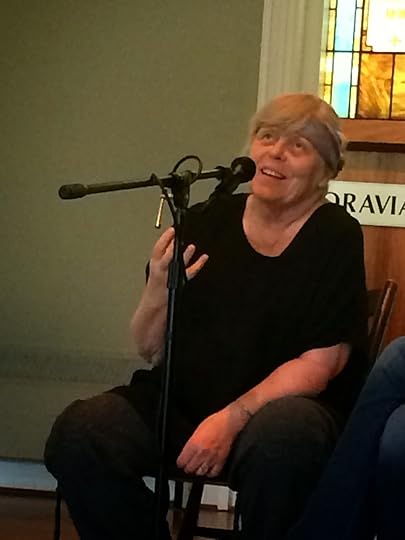
Ursula Hegi

Laurie Halse Anderson
Ursula Hegi, born & raised in Germany at a time when no one taught, wrote or spoke about the Holocaust, was forced to fight the oppressive weight of shame & silence in order to write her novel, STONES FROM THE RIVER, & to confront history & responsibility.
Laurie Halse Anderson also learned to silence herself as she grew up, to keep from asking difficult questions about American history that her teachers didn't want to answer. It left her angry, frustrated & confused. Eventually she learned to confront her questions through novels that delved into not only our nation's history but our own personal histories.
Both Ursula & Laurie had to move from silence to words on the page. That act of setting pen to paper & seeing letters emerge may well be one of the most courageous acts in the world. As Ursula explored the painful history of WWII, step by step, uncovering "all the little omissions along the way," she realized the Holocaust could have been stopped. As Laurie researched slavery, she realized that "slavery is not the African-American experience, it's the American experience." But it's only by breaking through the weight of silence that you can "take painful things & turn them into fruitful things."
Walking down Church Street, past the Brethren House, the Widows' House & the Sisters' House, past whispers & sighs, I heard a girl pound on a piano without delicacy or skill, but only an overwhelming need to break through the silence.
Published on June 11, 2014 05:04
June 2, 2014
ORPHAN BLACK & HOW TO CREATE CHARACTERS

One if the joys of watching the BBC America series, "Orphan Black," is that it's all about identity.
Canadian actress Tatiana Maslany plays a number of clones who each struggle for survival against powerful enemies, invasive diseases, & their own personal issues.
Maslany is such a gifted actress, the script so intelligent, & the technical aspects of the production so skillful you often forget you're watching a single actress tackle the roles of all the clones-- four or five major ones, & a few lesser ones. If you watch carefully, you get clues about how a character is born.
It's how she looks, yes, though here we have a number of women with the same face & body.
In the above image, the central figure-- & protagonist of the series-- is Sarah. A fearless, ruthless grifter, Sarah uses men to get what she needs, but is slowly learning to share her heart with others outside her inner circle. Sarah is always in black, often leather--a lean, mean fighting machine-- with dark, sooty eyes. It's devastating to watch her moments of tenderness with her daughter ... & sometimes lover/betrayer.
On the left is Cosima, the "softest" of them all. A brilliant, emotional scientist, she discovers she's in love with a woman doctor (who works for the enemy) at the same time she realizes she may be dying. Her hair is in intricate dreadlocks, she wears glasses & original, artsy dresses-- she puts her unique stamp on everything she does.
On the right is Alison. The soccer mom, a timid White Rabbit, always rushing & glancing at her watch, yet seemingly never arriving at her destination. Every part of her is tightly wound up-- from her bangs to her ponytail to her perky walk-- but inside she drinks & rages, & the result is both comic & moving-- a Stepford Wife breaking free from her coded behavior.
There is also Rachel, the most controlled, power-hungry one of all.
And Sarah's twin-- feral, primal Helena.
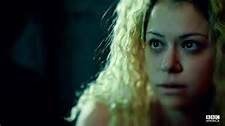
But even more important than how each character looks is how she sees. The world is an excruciatingly different place for damaged Helena than it is to prim Alison, & wildly different to vulnerable Cosima than to raw Sarah.
And yet.
One of the most rewarding aspects of watching "Orphan Black" is the realization that different as these women are, & as different as the world appears to them, they are connected in a way their creators never anticipated-- they are sisters. They develop their own uneasy bond, & another of the joys of watching this series is when one of the clones must impersonate another --for example, watching Maslany play Sarah who must play Alison. Mouth tightens, eyes widen, shoulders straighten, & we see Sarah strain to squeeze herself into Alison's rigid boundaries.
The "orphans" were created with a purpose in mind, a task to fulfill, but they went far beyond their creators' original vision & became true characters-- emotionally consistent yet constantly developing in surprising, unpredictable & deeply satisfying ways.
The kind of characters that you want to watch week after week.
The kind you follow page after page.
The kind you want to create.
Published on June 02, 2014 05:46
May 29, 2014
ENTERING YOUR STORY BY SEA
Entering a story is very similar to entering a country by sea.
I imagine it first. Maybe read what other travelers have written about it. But nothing compares to seeing it for the first time with my own eyes. I may be traveling on a large ship, but this is how I imagine myself:
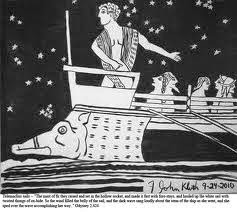
An ancient voyager after months at sea, not sure what country I'm approaching, friendly or dangerous, & what mythic monsters await me.
It's a voyage of discovery that begins before I set foot on land. But now I'm here, and I must navigate from the dock to the city street. Each port has its own unique character that reveals more than you can learn at a generic airport. Even when the landing area is modernized with new buildings and uniformed officials, glimpses of the ancient port emerge, along with smells and sounds, and instantly I'm thrust into another world.
In Alexandria, Egypt, an enormous new port authority complex stands abandoned. The instant you pass through, you are confronted with vendors hawking Cleopatra and King Tut wares, pungent spices, dazzling colors. Not far away, archaeologists dig for fragments from Cleopatra's palace in the depths of the Mediterranean Sea.
Istanbul, with its skyline of the Hagia Sofia, may be the greatest paradox. Leave the long port authority buildings, again with much empty space and unused rooms. Turn right: you move toward the modern city with every convenience, franchise, etc, you could desire. Turn left: you move toward the old city, the Grand Socco-- the greatest covered market in the world-- and the Hagia Sofia, narrow winding streets, a city you can explore by traveling across rooftops or through underground caverns and cisterns.

Would you turn left or right?
My instinct is always to turn left and venture deeper into the unknown depths of the country. Once I've gotten lost in its labyrinth, dug my fingers into sacks of spices, tasted the local food, listened to the voices, and sat at a cafe just watching my people interact-- yeah, by now they've become my people, almost ready to walk across the page -- then I can explore the modern overlay.
This is where I am now. In port, on the deck of the ship. Waiting to disembark and feel land under my feet again. Pen and notebook in hand. The scents of the new world already drawing me in.
God, I love this moment.
I imagine it first. Maybe read what other travelers have written about it. But nothing compares to seeing it for the first time with my own eyes. I may be traveling on a large ship, but this is how I imagine myself:

An ancient voyager after months at sea, not sure what country I'm approaching, friendly or dangerous, & what mythic monsters await me.
It's a voyage of discovery that begins before I set foot on land. But now I'm here, and I must navigate from the dock to the city street. Each port has its own unique character that reveals more than you can learn at a generic airport. Even when the landing area is modernized with new buildings and uniformed officials, glimpses of the ancient port emerge, along with smells and sounds, and instantly I'm thrust into another world.
In Alexandria, Egypt, an enormous new port authority complex stands abandoned. The instant you pass through, you are confronted with vendors hawking Cleopatra and King Tut wares, pungent spices, dazzling colors. Not far away, archaeologists dig for fragments from Cleopatra's palace in the depths of the Mediterranean Sea.
Istanbul, with its skyline of the Hagia Sofia, may be the greatest paradox. Leave the long port authority buildings, again with much empty space and unused rooms. Turn right: you move toward the modern city with every convenience, franchise, etc, you could desire. Turn left: you move toward the old city, the Grand Socco-- the greatest covered market in the world-- and the Hagia Sofia, narrow winding streets, a city you can explore by traveling across rooftops or through underground caverns and cisterns.

Would you turn left or right?
My instinct is always to turn left and venture deeper into the unknown depths of the country. Once I've gotten lost in its labyrinth, dug my fingers into sacks of spices, tasted the local food, listened to the voices, and sat at a cafe just watching my people interact-- yeah, by now they've become my people, almost ready to walk across the page -- then I can explore the modern overlay.
This is where I am now. In port, on the deck of the ship. Waiting to disembark and feel land under my feet again. Pen and notebook in hand. The scents of the new world already drawing me in.
God, I love this moment.
Published on May 29, 2014 05:14
May 22, 2014
ON THE ROAD AGAIN!
I'm going on the road again!
Well, actually on the sea!

In late August I'll set sail on my third Semester at Sea voyage--a university on a ship. We leave from Southampton, England & return to Fort Lauderdale, Florida in December. This voyage will be an entire semester, & its theme is "Atlantic Exploration."
I'll teach 3 courses: 2 sections of Travel Writing, & 1 section of Creative Writing: Fiction. The courses are supplemented by field trips & experiences at the ports where we dock along the way, usually for 3-4 days.
Here's our itinerary, in order of ports:
Southampton, England (depart August 23rd)
St. Petersburg, Russia
Gdansk, Poland
Rostok, Germany
Antwerp, Belgium
Le Havre, France
Dublin, Ireland
Lisbon, Portugal
Cadiz, Spain
Casablanca, Morocco
Dakar, Senegal
Ghana: Takoradi & Tema
Brazil: Rio & Salvador
Bridgetown, Barbados
Havana, Cuba
Fort Lauderdale, Florida (arrive December 8th)
As you can imagine, I'm very excited about this voyage. We'll travel places I've never been & have longed to see-- like St. Petersburg, Salvador, & Havana! And life at sea is an amazing experience of its own, with its own rhythm.

Nothing quite matches teaching a class on the deck of a ship during sunset ... or trying to teach during a typhoon while books fly & waves hit the windows ... or watching the sunrise from the top deck.

I'm wearing the Captain's cap, but don't worry, I am not steering the ship. However, I'll keep a travel blog right here, posting news, observations, photos, updates all through the voyage.
I hope you'll follow my blog & travel with me so we can share the voyage.
And if you have any suggestions about places to go or things to see, please comment & let me know!
Meanwhile this spring/summer I'll continue posting observations about writing & life, updates on my novel, & guest posts from fellow creative artists. And reflections on what the writer & artist can learn about craft & art from travel. So come with me!
Well, actually on the sea!

In late August I'll set sail on my third Semester at Sea voyage--a university on a ship. We leave from Southampton, England & return to Fort Lauderdale, Florida in December. This voyage will be an entire semester, & its theme is "Atlantic Exploration."
I'll teach 3 courses: 2 sections of Travel Writing, & 1 section of Creative Writing: Fiction. The courses are supplemented by field trips & experiences at the ports where we dock along the way, usually for 3-4 days.
Here's our itinerary, in order of ports:
Southampton, England (depart August 23rd)
St. Petersburg, Russia
Gdansk, Poland
Rostok, Germany
Antwerp, Belgium
Le Havre, France
Dublin, Ireland
Lisbon, Portugal
Cadiz, Spain
Casablanca, Morocco
Dakar, Senegal
Ghana: Takoradi & Tema
Brazil: Rio & Salvador
Bridgetown, Barbados
Havana, Cuba
Fort Lauderdale, Florida (arrive December 8th)
As you can imagine, I'm very excited about this voyage. We'll travel places I've never been & have longed to see-- like St. Petersburg, Salvador, & Havana! And life at sea is an amazing experience of its own, with its own rhythm.

Nothing quite matches teaching a class on the deck of a ship during sunset ... or trying to teach during a typhoon while books fly & waves hit the windows ... or watching the sunrise from the top deck.

I'm wearing the Captain's cap, but don't worry, I am not steering the ship. However, I'll keep a travel blog right here, posting news, observations, photos, updates all through the voyage.
I hope you'll follow my blog & travel with me so we can share the voyage.
And if you have any suggestions about places to go or things to see, please comment & let me know!
Meanwhile this spring/summer I'll continue posting observations about writing & life, updates on my novel, & guest posts from fellow creative artists. And reflections on what the writer & artist can learn about craft & art from travel. So come with me!
Published on May 22, 2014 09:11
April 17, 2014
THANK YOU, GABRIEL GARCIA MARQUEZ
I read One Hundred Years of Solitude by Gabriel García Márquez for the first time on an Israeli kibbutz where I was suffering from a mysterious fever. About midway through the novel I was burning, my fever so intense I had to set down the book and go outside and remind myself that I was still in this world, the one I'd been in before I picked up the book. The moon and stars were close enough to touch, the air smelled of oranges, the turkeys cried, and I wandered, crowned by a wreath of yellow butterflies, just like the young man in the novel.
García Márquez made me dizzy with the sense of possibility, of how high a writer can aim. Even more he made me realize that his Macondo was no more fantastic or magical than the world that surrounded me—i.e., the Israeli reality, the culmination of centuries of Jewish dreams and fantasies. Jewish history is a primer in understanding magical realism: a small group of wanderers who are persecuted wherever they go because they persist in shooting the clay feet from every idol and in finding God in the imagination rather than in the flesh. Jewish identity, in all its ghetto-mellah-converso-ashkenazi-Sephardic-mizrahi beauty, pain and absurdity, is the essence of magic realism....
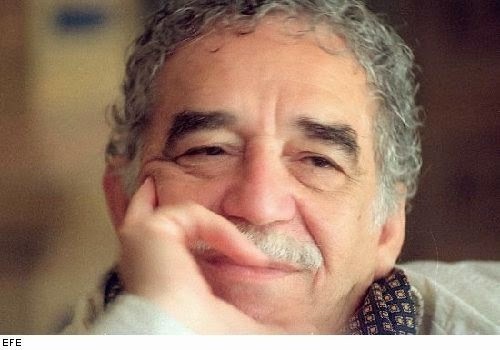
I wrote this several years ago when I was asked by Tamara Kaye Sellman, the editor of MARGIN, a journal that focused on magic realism, for a personal definition of what I consider magic realism to be. For me, it was linked with my identity as a writer and a Jew, and I never felt it more powerfully than when I read One Hundred Years of Solitude.
Gabriel Garcia Marquez died today in Mexico City at age 87. A native of Colombia, he is widely credited with helping to popularize "magical realism," a genre "in which the fantastic and the realistic are combined in a richly composed world of imagination," as the Nobel committee described it upon awarding him the prize for literature in 1982.
“It is not true that people stop pursuing dreams because they grow old, they grow old because they stop pursuing dreams.”
― Gabriel García Márquez
Thank you, Gabriel Garcia Marquez for your brilliance, sense of play, and never-ending dreams that provide inspiration for countless writers all over the world.
Rest in peace.
García Márquez made me dizzy with the sense of possibility, of how high a writer can aim. Even more he made me realize that his Macondo was no more fantastic or magical than the world that surrounded me—i.e., the Israeli reality, the culmination of centuries of Jewish dreams and fantasies. Jewish history is a primer in understanding magical realism: a small group of wanderers who are persecuted wherever they go because they persist in shooting the clay feet from every idol and in finding God in the imagination rather than in the flesh. Jewish identity, in all its ghetto-mellah-converso-ashkenazi-Sephardic-mizrahi beauty, pain and absurdity, is the essence of magic realism....

I wrote this several years ago when I was asked by Tamara Kaye Sellman, the editor of MARGIN, a journal that focused on magic realism, for a personal definition of what I consider magic realism to be. For me, it was linked with my identity as a writer and a Jew, and I never felt it more powerfully than when I read One Hundred Years of Solitude.
Gabriel Garcia Marquez died today in Mexico City at age 87. A native of Colombia, he is widely credited with helping to popularize "magical realism," a genre "in which the fantastic and the realistic are combined in a richly composed world of imagination," as the Nobel committee described it upon awarding him the prize for literature in 1982.
“It is not true that people stop pursuing dreams because they grow old, they grow old because they stop pursuing dreams.”
― Gabriel García Márquez
Thank you, Gabriel Garcia Marquez for your brilliance, sense of play, and never-ending dreams that provide inspiration for countless writers all over the world.
Rest in peace.
Published on April 17, 2014 15:23
April 10, 2014
LOVE YOUR STORY
This post is for all you creative souls out there, whatever your medium of expression. And yeah, it's for me, too. Sometimes we need reminders.
The traditional advice is to write the book you'd love to read.
Not the book you display proudly on your shelf, not the one you talk about at parties and quote reviews without having read it, not the one you wish you would write, and not the one you could write if you were another writer.
No.
Write the kind of book you read when you're alone at night and reading is the only answer-- the story that warms you like a blanket, sparks your senses, excites your emotions and your mind, and returns you to the enchanted garden of childhood when every story was magic.

The story that changed your life. The story that made you feel as if stars were falling from the sky into your hands.
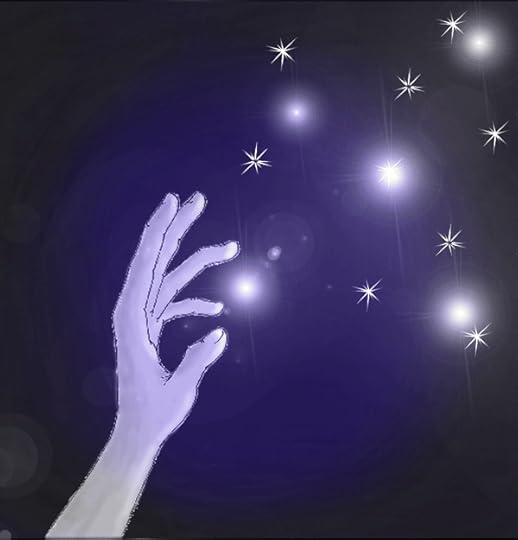
Yeah, that story.
The one that was clearly written by an author who loved her story because it sang her truth. No wonder those stories change our lives. Writing them changed their authors' lives.
So why isn't that always the song we write, the illusion we perform, the story we write?
Fear is one reason. Fear of digging deep into our truth and admitting what we love-- kind of like sex, admitting what turns us on. And fear of being judged. We've heard often enough that children's literature is lesser, romance is mindless, magic is nothing but tricks, and on and on.
Another reason is that we don't trust the whispering voice inside us, the jagged-edged stars that appear in our writing with no logic, no sense, no reason ... and yet, they're ours emerging from a deep, dark world we can't explain.
Hold onto those stars. Love that whispering voice. And when you follow the whispers like a detective following clues, the voice on the page sounds ... more like you.
And you'll love your story, and others will, too.
The traditional advice is to write the book you'd love to read.
Not the book you display proudly on your shelf, not the one you talk about at parties and quote reviews without having read it, not the one you wish you would write, and not the one you could write if you were another writer.
No.
Write the kind of book you read when you're alone at night and reading is the only answer-- the story that warms you like a blanket, sparks your senses, excites your emotions and your mind, and returns you to the enchanted garden of childhood when every story was magic.

The story that changed your life. The story that made you feel as if stars were falling from the sky into your hands.

Yeah, that story.
The one that was clearly written by an author who loved her story because it sang her truth. No wonder those stories change our lives. Writing them changed their authors' lives.
So why isn't that always the song we write, the illusion we perform, the story we write?
Fear is one reason. Fear of digging deep into our truth and admitting what we love-- kind of like sex, admitting what turns us on. And fear of being judged. We've heard often enough that children's literature is lesser, romance is mindless, magic is nothing but tricks, and on and on.
Another reason is that we don't trust the whispering voice inside us, the jagged-edged stars that appear in our writing with no logic, no sense, no reason ... and yet, they're ours emerging from a deep, dark world we can't explain.
Hold onto those stars. Love that whispering voice. And when you follow the whispers like a detective following clues, the voice on the page sounds ... more like you.
And you'll love your story, and others will, too.
Published on April 10, 2014 06:29
March 25, 2014
ETERNITY IN A NUTSHELL
When my older son was two, in order to find time to write, I drove him to a babysitter two mornings a week-- Tuesday and Thursday, from 9 - 11. I lived half an hour from the sitter's house, and the first morning I brought him there I realized that to drive back and forth would chop off half my writing time.
The second morning, I dropped him off, and then drove down the street -- a few houses away -- and parked. I leaned my notebook against the steering wheel and wrote till 10:57, when I started the car, put it in reverse, returned to the babysitter's house, and picked him up promptly at 11:00.
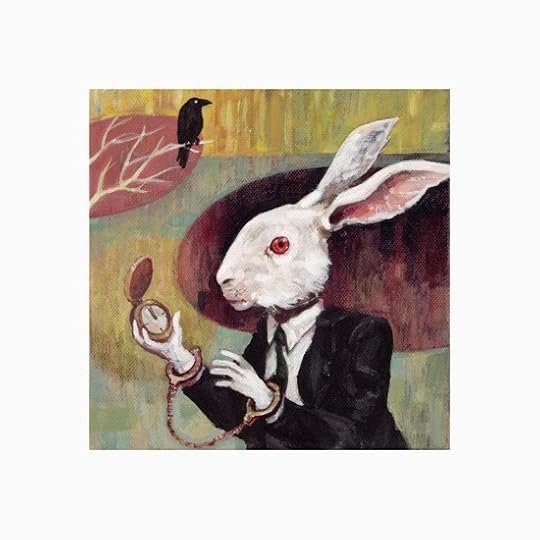 I did this for about 6 months.
I did this for about 6 months.
It was maddening! It took at least 10 - 15 minutes to warm up, and by the time I got into a groove, it was time to stop. The writing I did during those days was too frantic and rushed to be good, but it screamed with urgency and need. And it was a workout that kept my writing hand limber and my mind fluid.
Through the years I found various means of keeping myself from rusting as a writer, but recently I realized two things:
1) Years of carving hours and minutes of writing time into my life made me resourceful and taught me intense discipline. Whenever, wherever I found a space a time, I plunged in. If I couldn't find it, I created it.
2) Like Hamlet, "I could be bounded in a nutshell, and count myself a king of infinite space, were it not that I have bad dreams."
An hour of writing time was an eternity. Heart pounding, fingers trembling, I wrote like someone in a trance.
Today, I have more time to write, but at least three mornings a week, I need to teach or go to a meeting, and no matter how early I wake up, I feel pressure the instant I set pen to paper. My eye is on the clock, watching the minutes fleet past, knowing I have to stop soon.
But here's what I discovered: on those harried mornings, I nearly always come up with something raw and wild that leads me into new, unexplored territory -- and I often have to stop abruptly in the middle of a thought. The tension of these mornings recreates the urgency of those crazed hours in a parked car when my pen flew across the page in a desperate race to beat time.
Maybe you already have a ticking clock marking the end of your writing time, but if you don't, it might be worthwhile to set a time limit and force yourself to stop when it hurts --
and not let yourself continue till the next day. Just let it brood inside you and see what happens.
The second morning, I dropped him off, and then drove down the street -- a few houses away -- and parked. I leaned my notebook against the steering wheel and wrote till 10:57, when I started the car, put it in reverse, returned to the babysitter's house, and picked him up promptly at 11:00.
 I did this for about 6 months.
I did this for about 6 months.It was maddening! It took at least 10 - 15 minutes to warm up, and by the time I got into a groove, it was time to stop. The writing I did during those days was too frantic and rushed to be good, but it screamed with urgency and need. And it was a workout that kept my writing hand limber and my mind fluid.
Through the years I found various means of keeping myself from rusting as a writer, but recently I realized two things:
1) Years of carving hours and minutes of writing time into my life made me resourceful and taught me intense discipline. Whenever, wherever I found a space a time, I plunged in. If I couldn't find it, I created it.
2) Like Hamlet, "I could be bounded in a nutshell, and count myself a king of infinite space, were it not that I have bad dreams."
An hour of writing time was an eternity. Heart pounding, fingers trembling, I wrote like someone in a trance.
Today, I have more time to write, but at least three mornings a week, I need to teach or go to a meeting, and no matter how early I wake up, I feel pressure the instant I set pen to paper. My eye is on the clock, watching the minutes fleet past, knowing I have to stop soon.
But here's what I discovered: on those harried mornings, I nearly always come up with something raw and wild that leads me into new, unexplored territory -- and I often have to stop abruptly in the middle of a thought. The tension of these mornings recreates the urgency of those crazed hours in a parked car when my pen flew across the page in a desperate race to beat time.
Maybe you already have a ticking clock marking the end of your writing time, but if you don't, it might be worthwhile to set a time limit and force yourself to stop when it hurts --
and not let yourself continue till the next day. Just let it brood inside you and see what happens.
Published on March 25, 2014 06:25
March 17, 2014
Once Upon A Time, Ruth Knafo Setton's blog: I WANNA BE HOUDINI!
Once Upon A Time, Ruth Knafo Setton's blog: I WANNA BE HOUDINI!: March 18th is my birthday, and this year, more than ever-- after a seemingly endless winter-- I wanna be Houdini! He defied the limits ...
Published on March 17, 2014 06:23
I WANNA BE HOUDINI!
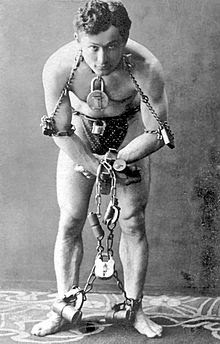
March 18th is my birthday, and this year, more than ever-- after a seemingly endless winter-- I wanna be Houdini!
He defied the limits of mortality and human weakness.
They locked him into chests and threw him into the East River. They imprisoned him in maximum security cells, chained and handcuffed him. They attached him to ropes slung from skyscrapers and bound him inside straitjackets.
And he escaped. Over and over, he freed himself.
He defied the limits of his own personal identity-- a Hungarian Jew born Erik Weisz in in 1874, only 5'6" tall-- he transformed himself into the greatest magician the world had ever seen. He made us believe humans can free themselves from any prison, any terrible circumstance, any lock that imprisons our minds.
I don't make resolutions on New Year's Day-- I make them on my birthday. So this year I want to become a true magician.
I want to:
BREAK FREE from straitjackets, prison cells, handcuffs and blinders that lock me inside limitations.
RIP off every "mind-forg'd manacle" (William Blake's term) that holds me back from writing, living, creating and loving the way I can if I'm free.
BITE into freedom, press the sun against my heart, find joy in my work, and connect connect connect.
Will you join me?
HAPPY SPRING!
Published on March 17, 2014 06:16



